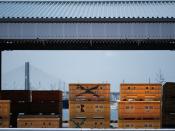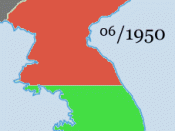From the post World War II reconstruction period to the 1960's, the Japanese economy achieved an average annual growth rate of over 10 percent, a rate that was high not only in comparison to other countries, but historically high for Japan as well. (Kumon and Rosovsky 68) It was during this period that the foundation was set for this country to become an economic giant. Some of the most characteristic economic mechanisms of the Japanese system trace their roots to that period; an understanding of that period is indispensable when trying to understand the current Japanese economy.
The time called postwar reconstruction started for Japan with the end of World War II in 1945. The economic toll on the country was enormous. Fully, one forth of all Japanese assets in terms of fixed capital and facilities had disappeared, and 80% of the ships had been lost. To add to the burden, expanded military expenditures during the final periods of the war had caused rampant inflation, and the lack of foreign currency coming in severely limited trade, which in turn resulted in the extreme shortages of materials.
The desperate state of Japan can clearly be seen with the naked eye. (Reid 47) The apparent malformity led to many reforms that brought an end to sharecropping and boosted agricultural income. Farmers were given reasons to have greater desire to raise crops and increase productivity. The industry was decentralized, with spin off and newly created corporations bringing about stiffer competition. The heads of zabatzu affiliated companies were replaced, and the foundation was laid for more democratic management styles. Opening shares up for public trading helped democratize ownership and created the base for today's financial markets.
This time also saw a policy in graded production. (Treager 6) This policy was enacted to deal...


